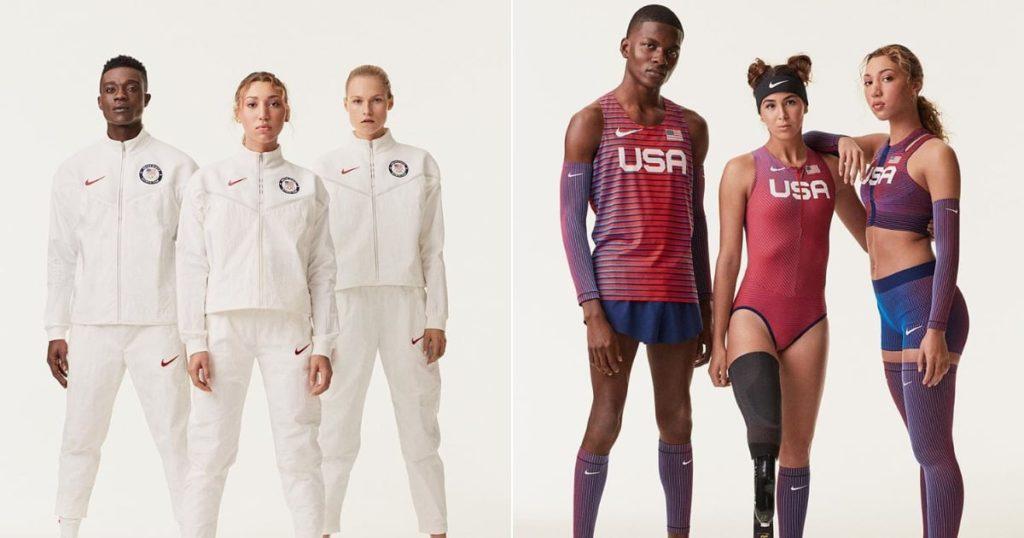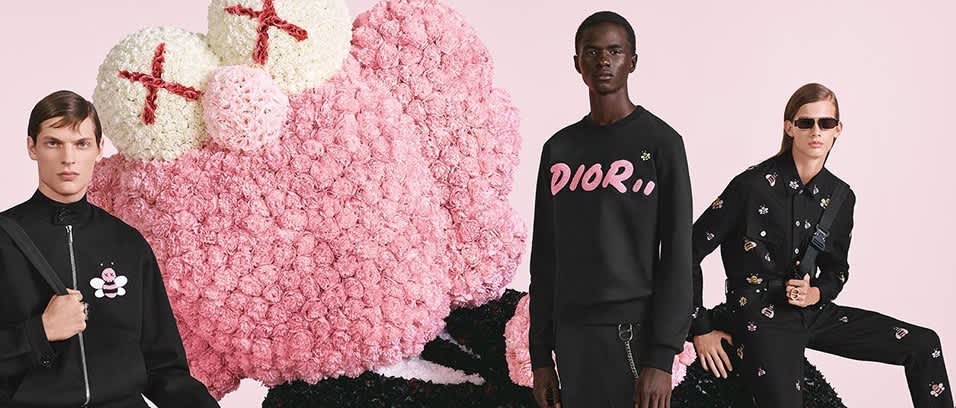Have you ever wondered how high fashion influences Olympic Games, creating iconic uniforms for athletes around the world?
The goal of this article is to shed light on the history and style of athletic competition and high fashion. Discover the diverse collaborations that have shaped our society, the impact of mainstream culture, and the challenges that designers face when creating clothing that is both stylish and functional.
Discover how high fashion designers evolved Olympic uniforms during a fascinating tour of the fascinating world of sport and haute couture. Are you ready to take a dive into the athletic arena like never before?
Historical Background
The historical backdrop of Olympic uniforms presents a riveting narrative, intricately woven into the fabric of time, reflecting not only the evolution of sports but also the socio-cultural milieu of each era. As the Games progressed from their ancient origins to the modern spectacle we witness today, the attire adorning athletes has undergone a metamorphosis, mirroring the shifting paradigms of fashion and identity. From the simple garments worn by ancient Olympians to the technologically advanced and visually striking uniforms of contemporary athletes, the evolution of Olympic attire is a testament to human ingenuity and creativity.
Throughout history, uniforms have served as more than just functional attire; they have been potent symbols of national pride and unity, embodying the spirit and ethos of the countries they represent. The significance of Olympic uniforms in portraying national identity cannot be overstated, with each design element meticulously crafted to showcase cultural heritage and values. Whether adorned with national colors, emblems, or motifs, these uniforms serve as powerful visual representations of the diverse tapestry of nations participating in the Games.
Moreover, the intersection of fashion and sports has yielded groundbreaking collaborations between renowned designers and athletic teams, transcending the boundaries between haute couture and athletic wear. Previous partnerships have seen fashion luminaries lending their expertise to create iconic uniforms that seamlessly blend style with performance. From Ralph Lauren outfitting Team USA to Stella McCartney designing for Team Great Britain, these collaborations have not only elevated the aesthetics of Olympic attire but have also propelled fashion into the global spotlight, cementing its role as an integral aspect of the Games.
As we journey through the annals of Olympic history, it becomes evident that the evolution of uniforms is not merely a reflection of changing trends in fashion but a manifestation of the enduring human spirit and the unyielding pursuit of excellence. From the ancient stadion races of Olympia to the state-of-the-art stadiums of the modern Olympics, the evolution of Olympic uniforms stands as a testament to the timeless allure of sport and the indomitable spirit of competition.
Emergence of High Fashion Designer Olympic Uniforms

In the annals of Olympic history, the emergence of high fashion designer Olympic uniforms marks a significant milestone, ushering in an era where the worlds of sport and couture converge in a dazzling display of creativity and innovation. Pioneering moments of fashion designers venturing into the realm of Olympic attire have reshaped the landscape of athletic wear, transcending the conventional boundaries of functionality to embrace haute couture. From the iconic collaborations that have graced the Olympic stage to the cutting-edge designs that have captured the imagination of audiences worldwide, the integration of high fashion into Olympic uniforms represents a paradigm shift in the way we perceive athletic apparel.
Fashion Designers Make Their Mark:
- The entry of fashion designers into the domain of Olympic uniforms heralds a new chapter in the history of sports attire, marked by a fusion of style and performance.
- Renowned designers such as Ralph Lauren, Stella McCartney, and Giorgio Armani have left an indelible imprint on Olympic fashion, infusing their signature aesthetics into the fabric of athletic wear.
- Their visionary designs have not only elevated the visual appeal of Olympic uniforms but have also underscored the importance of fashion as a means of self-expression and cultural identity.
Driving Forces Behind Collaboration:
- The collaboration between high fashion and Olympic teams is driven by a myriad of factors, chief among them being the desire to showcase national pride and identity on the global stage.
- With the eyes of the world upon them, participating countries seek to make a statement through their attire, leveraging the expertise of renowned designers to craft uniforms that embody the spirit of their nation.
- Additionally, the allure of Olympic sponsorship deals and the potential for lucrative brand exposure have incentivized fashion houses to lend their talents to the creation of Olympic uniforms, further fueling the collaboration between high fashion and athletic teams.
Initial Reactions and Controversies:
- The incorporation of high fashion into Olympic uniforms has not been without its share of controversy, with purists decrying the perceived commercialization of the Games and the prioritization of style over substance.
- Initial reactions to designer Olympic uniforms ranged from awe and admiration to skepticism and criticism, highlighting the polarizing nature of fashion in the realm of athletics.
- However, as the dust settled and athletes took to the field adorned in their designer attire, the undeniable allure and visual impact of high fashion Olympic uniforms began to win over even the staunchest of skeptics, solidifying their place in the pantheon of Olympic history.
In essence, the emergence of high fashion designer Olympic uniforms represents a bold step forward in the evolution of athletic apparel, marrying form and function in a harmonious union that captivates the imagination and inspires awe. As the legacy of these iconic collaborations continues to unfold, one thing remains certain: the influence of high fashion on the Olympic stage is here to stay, reshaping the way we perceive and appreciate the intersection of sport and style.
Notable Collaborations and Designs

In the realm of high fashion designer Olympic uniforms, notable collaborations and designs have left an indelible mark on the annals of Olympic history, shaping the narrative of athletic attire with their innovative designs and cultural significance. Highlighting specific Olympic Games and the designers involved offers a captivating glimpse into the evolution of Olympic fashion, showcasing the fusion of style and sport in iconic moments that have captured the imagination of audiences worldwide. From the sleek and sophisticated uniforms crafted by Ralph Lauren for Team USA at the 2012 London Olympics to the ethereal creations of Stella McCartney for Team Great Britain in 2016, each collaboration has brought a unique vision to the forefront, embodying the spirit of their respective nations while pushing the boundaries of athletic apparel.
Iconic Collaborations:
- The 2012 London Olympics saw Ralph Lauren infuse his signature Americana aesthetic into the uniforms worn by Team USA, featuring classic designs adorned with patriotic emblems and motifs that celebrated the rich heritage of American sport.
- In 2016, Stella McCartney made headlines with her bold and innovative designs for Team Great Britain, incorporating sustainable materials and modern silhouettes to create uniforms that were as stylish as they were functional, earning praise from athletes and fashion critics alike.
- The 2020 Tokyo Olympics witnessed a collaboration between fashion icon Giorgio Armani and the Italian Olympic team, resulting in sleek and sophisticated uniforms that exuded elegance and sophistication, reflecting Italy’s status as a global fashion powerhouse.
Memorable Designs and Their Impact:
- The impact of these collaborations extends far beyond the confines of the Olympic Games, influencing mainstream fashion trends and redefining the way we perceive athletic attire.
- With their emphasis on style and performance, these memorable designs have inspired a new generation of athletes to embrace fashion as a means of self-expression, empowering them to compete with confidence and grace on the world stage.
- Moreover, the cultural and societal trends that have shaped these designs reflect the evolving landscape of fashion and sport, highlighting the interconnectedness of these two seemingly disparate worlds.
Influence of Cultural and Societal Trends:
- From the resurgence of retro aesthetics to the growing emphasis on sustainability and inclusivity, cultural and societal trends play a pivotal role in shaping the design choices of high fashion designer Olympic uniforms.
- Designers are increasingly drawing inspiration from diverse sources, incorporating elements of streetwear, haute couture, and performance wear to create uniforms that resonate with a global audience.
- As we look towards the future, the influence of cultural and societal trends will continue to drive innovation and creativity in the world of high fashion designer Olympic uniforms, ensuring that each new collaboration is as groundbreaking and impactful as the last.
Impact on Fashion and Sports Culture
The impact of high fashion designer Olympic uniforms on both mainstream fashion and sports culture is nothing short of profound, reshaping the way we perceive athletic attire and influencing trends on a global scale. The effect of these designer uniforms on mainstream fashion cannot be overstated, with each new collaboration sparking a flurry of excitement and anticipation within the fashion industry. From the runway to the streets, the influence of Olympic fashion can be seen in the proliferation of sportswear-inspired designs and the adoption of athletic motifs in high-end collections. Moreover, the symbiotic relationship between high fashion and sports apparel industry has led to a convergence of styles, blurring the lines between performance wear and everyday fashion. This cross-pollination of design has not only elevated the aesthetic appeal of sports apparel but has also opened up new avenues for innovation and creativity within the industry.
Impact on Mainstream Fashion:
- The introduction of high fashion designer Olympic uniforms has brought a sense of glamour and sophistication to athletic attire, challenging traditional notions of sportswear and paving the way for a new era of athletic chic.
- Designers are increasingly drawing inspiration from the world of sports, incorporating elements of functionality and performance into their collections while infusing them with a sense of luxury and refinement.
- As a result, sportswear has become a staple of mainstream fashion, with athletic silhouettes and technical fabrics dominating runways and street style alike, blurring the boundaries between sport and style.
Influence on Sports Apparel Industry:
- The influence of high fashion designer Olympic uniforms extends beyond the realm of fashion, permeating the sports apparel industry and driving innovation in design and technology.
- Collaborations between fashion designers and sports brands have led to the development of cutting-edge performance wear that combines style with functionality, catering to the demands of athletes and consumers alike.
- As a result, sports apparel has evolved from purely functional attire to a fashion statement, with consumers increasingly seeking out garments that not only perform well but also look stylish and on-trend.
Perception of Athletes and the Public:
- The perception of high fashion designer Olympic uniforms among athletes and the public has been largely positive, with many embracing the opportunity to showcase their national pride in style.
- For athletes, wearing designer uniforms can instill a sense of confidence and pride, elevating their performance and inspiring them to compete at the highest level.
- Similarly, the public has embraced designer uniforms as symbols of national identity and cultural heritage, celebrating the creativity and innovation that they bring to the Olympic stage.
Challenges and Criticisms
As high fashion designer Olympic uniforms continue to captivate audiences and athletes alike, they have not been immune to challenges and criticisms, reflecting the complex interplay between fashion, sport, and culture. One of the primary criticisms leveled against these designer uniforms is the perception of commercialization and elitism in Olympic attire, with detractors arguing that the emphasis on luxury brands and high-end designs detracts from the spirit of the Games and exacerbates existing inequalities within the world of sports. Moreover, the challenges faced by designers in balancing functionality and aesthetics pose a significant hurdle, as the demands of athletic performance often clash with the desire for innovative and visually striking designs. Designers must navigate the delicate balance between form and function, ensuring that their creations not only look good but also perform well under the rigors of competition. Additionally, the discussion on sustainability and ethical considerations in high fashion collaborations has come to the forefront, with increasing awareness of the environmental and social impacts of the fashion industry. Critics argue that the production processes associated with high fashion designer Olympic uniforms can be environmentally harmful and socially exploitative, raising questions about the ethics of these collaborations and the responsibility of designers and brands to prioritize sustainability and ethical practices. In the face of these challenges and criticisms, it is imperative that stakeholders in the world of high fashion designer Olympic uniforms engage in meaningful dialogue and take concrete steps towards addressing these issues, ensuring that their creations uphold the values of inclusivity, sustainability, and fair labor practices. Only then can designer uniforms truly fulfill their potential as symbols of excellence and inspiration on the global stage.
Future Outlook
Looking ahead to the future, the integration of high fashion into Olympic uniforms is poised to continue evolving, shaping the landscape of athletic attire and redefining the intersection of sport and style on a global scale. Predictions on the continued integration of high fashion in Olympic uniforms suggest that collaborations between fashion designers and athletic teams will only become more prevalent, as the allure of the Olympic Games as a platform for showcasing creativity and innovation continues to grow. With each new collaboration, designers will push the boundaries of design, incorporating cutting-edge technologies and sustainable materials to create uniforms that not only look good but also perform at the highest level.
Continued Integration of High Fashion:
- As the worlds of fashion and sports become increasingly intertwined, we can expect to see more designers lending their talents to the creation of Olympic uniforms, blurring the lines between haute couture and athletic wear.
- The growing popularity of designer uniforms among athletes and the public alike will drive demand for innovative and stylish designs, further fueling the collaboration between high fashion and Olympic teams.
Shifts in Design Approaches and Collaborations:
- The future outlook also includes potential shifts in design approaches and collaborations, with designers exploring new avenues for creativity and experimentation.
- Collaborations between fashion designers and sports brands may extend beyond uniforms to include a range of athletic apparel and accessories, offering consumers a wider variety of stylish and functional options.
Evolving Role of Fashion in the Olympic Games:
- Speculation on the evolving role of fashion in the Olympic Games suggests that fashion will play an increasingly prominent role in shaping the overall aesthetic and experience of the Games.
- From the opening ceremonies to the medal podiums, fashion will serve as a powerful expression of national identity and cultural heritage, celebrating the diversity and creativity of participating countries.
In conclusion, the future outlook for high fashion designer Olympic uniforms is one of continued growth and innovation, with designers and athletes alike embracing the potential of fashion to inspire and uplift. As we look ahead to the next chapter in the evolution of Olympic attire, one thing is certain: the influence of high fashion will continue to leave an indelible mark on the world of sports and fashion for generations to come.
Related Questions & Answers
- How have Olympic uniforms evolved over time?
Olympic uniforms have evolved significantly over time, reflecting changes in fashion, technology, and cultural norms. From the simple attire of ancient Olympians to the high-tech, designer creations of today, Olympic uniforms have become a symbol of national pride and athletic prowess. Over the years, there has been a shift towards more streamlined and performance-oriented designs, with an emphasis on functionality and comfort for athletes. Additionally, collaborations between fashion designers and sports brands have brought a new level of style and sophistication to Olympic attire, further cementing its status as a cultural phenomenon. Overall, the evolution of Olympic uniforms mirrors the broader trends in fashion and sports, showcasing the relentless pursuit of excellence and innovation on the world stage.
- What challenges do designers face when creating Olympic uniforms?
Designers face several challenges when creating Olympic uniforms, including balancing functionality with aesthetics, meeting the diverse needs of athletes from different sports, and adhering to strict guidelines set by Olympic committees. Additionally, designers must consider factors such as cultural sensitivities, sustainability, and inclusivity when creating uniforms that represent the diverse nations and cultures participating in the Games. Furthermore, the pressure to innovate and make a bold statement while staying true to tradition can pose a significant challenge for designers. Overall, creating Olympic uniforms requires a delicate balance of creativity, technical skill, and cultural sensitivity to ensure that the uniforms not only look good but also perform well and resonate with athletes and audiences alike.
Key points
The evolution of high fashion Olympic uniforms has revealed a fascinating intersection between athletic prowess and style. The uniforms from the 2008 Olympic and Paralympic Games have not only represented the spirit of the games but have also left a mark on the world of fashion. Despite challenges and criticisms, there is still a promising future for Olympic athletes’ uniforms, as evidenced by the continued innovation and creativity. As we bid farewell to this exploration, one thing is certain: the popularity of Olympic uniforms will continue to captivate audiences and inspire generations to come.
I’m sketching dresses and women clothes since I remember myself. My goal is to be a major influencer in the fashion world, helping young ladies with their style decisions.











